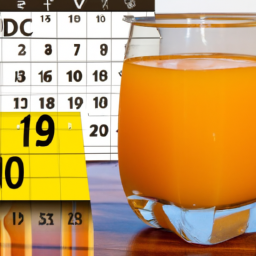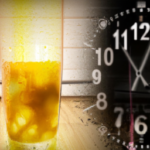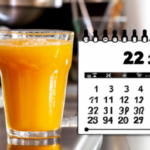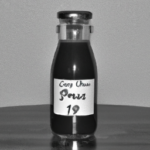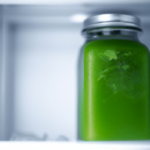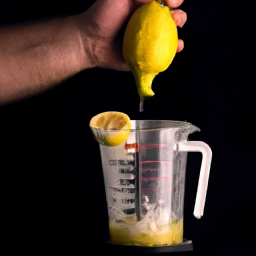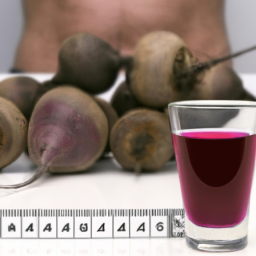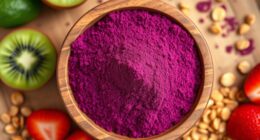As someone who loves adding fresh juice to my daily meals, I often think about how long the juice will stay fresh in the refrigerator before going bad. The answer to this question varies depending on several factors including the type of juice, how it is stored, and the temperature of the fridge.
In this article, I’ll be exploring the science behind juice shelf life, as well as offering tips on how to properly store your juice to extend its lifespan and avoid any potential health risks associated with drinking spoiled juice.
When it comes to determining how long juice lasts in the fridge, there are a few key factors to consider. For instance, juices that are high in acidity, like orange or grapefruit juice, tend to have a shorter shelf life than those with lower acidity levels, like apple or pear juice. Additionally, the type of packaging your juice comes in can impact its shelf life, with glass bottles being more effective at preserving freshness than plastic containers.
By understanding these factors and taking steps to properly store your juice, you can ensure that you’re getting the most out of your juice purchases and avoiding any unnecessary waste.
Key Takeaways
- Most juices last for 7-10 days in the refrigerator, but this can vary based on fruit type and quality.
- Storing juice in an airtight container in the fridge, away from direct sunlight and heat sources, can help extend its shelf life.
- Signs of spoilage include changes in color, sour smell, and off taste, so always check the expiration date and store juice away from raw meats or other contaminated foods.
- Freezing juice can extend its shelf life, but it may decrease its nutritional value, so fresh juice should be consumed within a few days for maximum benefits.
Factors Affecting Juice Shelf Life
Did you know that how you store your juice can greatly impact its shelf life, so don’t let your laziness ruin that delicious drink you were looking forward to?
The first factor that affects juice shelf life is the type of packaging. Air, light, and heat can all contribute to the breakdown of nutrients and the growth of bacteria in juice. That’s why most juices are sold in opaque, airtight containers that protect them from these elements. However, even these containers have their limits, and once you open them, the clock starts ticking.
Another factor that affects juice shelf life is the use of preservatives. Many juices contain added preservatives such as citric acid, ascorbic acid, or sodium benzoate to help prolong their shelf life. These preservatives can help prevent the growth of bacteria and mold, which can cause spoilage and lead to foodborne illness. However, some people prefer to avoid these additives and opt for fresh, unpreserved juices instead.
So, now that we know what factors affect juice shelf life, let’s move on to the question you’ve been waiting for: how long does juice last in the fridge?
How Long Does Juice Last in the Fridge?
Keep your chilled fruit drinks fresh and delicious by storing them in the refrigerator for an appropriate amount of time. Juice storage is critical to maintaining the quality and safety of your beverages. The length of time that juice lasts in the fridge varies depending on several factors, including the type and quality of the juice, as well as the refrigeration methods used.
Generally, most juices will last between 7-10 days in the refrigerator, but this can vary based on several factors. Factors that can affect the shelf life of juice include the type of fruit, the processing method, and the storage conditions. To ensure that your juice stays fresh for as long as possible, it’s essential to store it in an airtight container in the refrigerator. This will help to prevent oxidation and the growth of bacteria, which can cause the juice to spoil.
When your juice has reached its expiration date or has begun to show signs of spoilage, it’s time to dispose of it.
In the next section, we will discuss some signs that your juice has gone bad.
Signs that Your Juice Has Gone Bad
If you neglect to store your fruit drinks properly, you might face the disappointment of taking a sip of rancid, spoiled juice. It’s important to pay attention to the shelf life of your juice and to recognize signs of spoilage.
Indicators of spoiled juice include a change in color, a sour smell, and a sour or off taste. The color of the juice may change from its original color to a darker, cloudy appearance. The sour smell is another indication that the juice has gone bad. If the juice has a sour or off taste, it’s likely that it’s become contaminated with bacteria.
Prevention is key when it comes to keeping your juice fresh and tasty. To prevent spoiled juice from happening in the first place, it’s important to store your juice properly. Keep your juice refrigerated at all times, and make sure to consume it within the recommended time frame.
Check the expiration date on the bottle or container of juice, and don’t consume it past that date. With proper storage and consumption, you can avoid the disappointment of drinking rancid juice.
In the next section, we’ll discuss how to store juice properly to extend its shelf life and ensure that it remains fresh and delicious.
How to Store Juice Properly
To properly preserve your potable potions, pack them in a cool, dark place away from direct sunlight and heat sources. When it comes to juice storage, it’s important to keep it in airtight containers to prevent oxidation and spoilage.
Here are some juice storage hacks to extend its shelf life:
-
Use glass containers – Unlike plastic containers, glass is non-reactive and doesn’t contain harmful chemicals that may leach into your juice.
-
Keep it refrigerated – Juice can quickly spoil when left at room temperature. Keep it in the fridge at a temperature below 40°F to slow down bacterial growth.
-
Freeze it – If you have excess juice, you can freeze it in ice cube trays or freezer-safe containers. This is a great way to extend its shelf life for up to 3 months.
By following these juice storage tips, you can enjoy your refreshing beverages for a longer period of time.
In the next section, we’ll discuss some additional tips to further extend the shelf life of your juice.
Tips for Extending Juice Shelf Life
Did you know that juice storage techniques play a vital role in maximizing juice freshness? Properly storing your juice can extend its shelf life and preserve its nutritional value.
One of the best tips for extending juice shelf life is to store it in smaller containers. This technique reduces the amount of air that comes in contact with the juice, which slows down the oxidation process and keeps the juice fresh for a longer period.
Another tip for extending juice shelf life is to always keep your fridge temperature below 40°F. This will help prevent bacterial growth and keep your juice safe to consume.
Additionally, it’s important to store juice away from direct sunlight and other heat sources. These environmental factors can shorten the juice’s shelf life and compromise its quality. By following these juice storage techniques, you can enjoy fresh and nutritious juice for an extended period of time.
Drinking fresh juice has numerous benefits for your health and wellbeing. Not only does it provide a convenient way to consume essential nutrients, but it also promotes hydration and boosts your immune system. So, let’s explore the benefits of drinking fresh juice!
Benefits of Drinking Fresh Juice
Imagine waking up feeling refreshed and energized, ready to tackle the day ahead, and the first thing you do is grab a glass of freshly squeezed juice that’s packed with essential vitamins and nutrients to nourish your body. Juicing benefits are numerous, and drinking fresh juice is one of the best ways to get all the necessary nutrients that your body needs to function at its best.
Here are three reasons why you should consider incorporating fresh juice into your diet:
-
Fresh juice is loaded with vitamins and minerals: Freshly squeezed juice contains an abundance of vitamins and minerals that are essential for maintaining good health. These nutrients help to boost the immune system, improve digestion and increase energy levels.
-
Fresh juice is a great source of antioxidants: Antioxidants are compounds that help to protect the body against damage from free radicals, which can cause cell damage and contribute to chronic diseases like cancer and heart disease. Freshly squeezed juice is a great source of antioxidants, which can help to prevent damage to the body’s cells.
-
Freshness is important: When it comes to juice, freshness is key. The longer juice sits in the fridge, the more nutrients it loses. Freshly squeezed juice should be consumed within a few days of being made to ensure that you’re getting all the benefits that it has to offer.
Drinking fresh juice is a great way to improve your overall health and wellbeing. However, it’s important to be aware of the risks of drinking spoiled juice. In the next section, we’ll explore the dangers of consuming juice that has gone bad.
Risks of Drinking Spoiled Juice
Uh-oh, drinking expired juice can lead to some pretty unpleasant symptoms like stomach cramps, nausea, and vomiting. Spoiled juice can also contain harmful bacteria that can cause food poisoning. The health consequences of drinking spoiled juice can range from mild to severe, depending on the type and extent of contamination.
Detecting spoilage can be tricky, as not all signs of spoilage are visible to the naked eye. Some common indicators of spoiled juice include a foul odor, off-color, or a change in flavor. It’s important to always check the expiration date of your juice and discard any that have expired.
In addition, make sure to store your juice properly in the fridge, away from raw meats or other foods that may contaminate it. By taking these simple precautions, you can avoid the risks of drinking spoiled juice and enjoy your favorite beverage without worry.
Speaking of proper storage, there are many common myths about juice storage that can lead to confusion and potentially spoilage. Let’s take a closer look at these myths and learn how to properly store juice in the fridge.
Common Myths About Juice Storage
I’ve heard a lot of myths about how to store juice properly, and I’m here to set the record straight.
First of all, keeping juice at room temperature is a big no-no. Bacteria thrive in warm environments, so leaving juice out at room temperature is a surefire way to spoil it quickly.
Secondly, freezing juice does not destroy its nutrients. In fact, freezing juice can actually help preserve its nutritional value, as well as extend its shelf life.
Finally, while juice may not last indefinitely, it can certainly last a lot longer than many people think. Properly stored juice can remain drinkable for several weeks, or even months, depending on the type of juice and how it’s stored.
Keeping Juice at Room Temperature
Although it may be tempting to leave juice out at room temperature, it’s not recommended. It can quickly spoil and become unsafe to consume. Juice storage alternatives, such as refrigeration, are necessary to keep juice fresh and safe for consumption.
Room temperature storage can lead to the growth of harmful bacteria, which can cause illness and spoil the taste of the juice. Studies have shown that refrigeration is the best way to preserve the quality of juice.
Refrigerated juice can last for up to 7 days after opening, while juice stored at room temperature can spoil within a few hours. Additionally, refrigeration helps to maintain the nutritional value of the juice. On the other hand, room temperature storage can cause the juice to lose some of its nutrients.
It’s important to note that freezing juice destroys nutrients, but more on that later.
Freezing Juice Destroys Nutrients
Freezing juice can decrease its nutritional value, with studies showing that up to 50% of vitamin C can be lost during the freezing process. This is because freezing damages the cell walls of fruits and vegetables, breaking down some of the nutrients they contain. However, freezing juice can still be an effective method of juice preservation, as it can extend the shelf life of juice for up to 8-12 months.
If you do choose to freeze your juice, there are a few things to keep in mind to retain as much nutritional value as possible. First, make sure to use airtight containers or freezer bags to prevent freezer burn. Second, try to freeze the juice as quickly as possible to minimize nutrient loss. Finally, thaw the juice slowly in the refrigerator to prevent further nutrient degradation.
While freezing juice is not ideal for retaining its nutritional value, it can still be a useful method for extending the shelf life of your juice.
It’s important to note that juice can last indefinitely in the refrigerator if it is properly stored in an airtight container or bottle. However, the longer juice sits in the fridge, the more its nutritional value will degrade.
In the next section, we’ll discuss how to tell if your juice has gone bad and how to properly dispose of it.
Juice Can Last Indefinitely
Juice can actually maintain its freshness indefinitely if stored in an airtight container or bottle. The key to keeping juice fresh is to prevent oxygen from reaching it. Oxygen is what causes juice to go bad, as it reacts with the juice’s natural sugars and enzymes, breaking them down over time.
When juice is stored in an airtight container, there is no oxygen to react with it, and the juice can remain fresh and drinkable for an extended period. However, it is important to note that even though juice can last indefinitely, it may lose some of its nutritional value over time.
This is because the vitamins and minerals found in juice are sensitive to light and air, and prolonged exposure to these elements can cause them to break down. Additionally, expired juice may not taste as good as fresh juice, as it may have a slightly off flavor or odor.
Despite these drawbacks, there are still benefits to drinking expired juice, such as reducing food waste and saving money. When it comes to juice storage and sustainability, there are a few things to keep in mind.
One way to reduce waste is to buy only as much juice as you need, and to consume it before it expires. Additionally, consider buying juice in bulk and freezing it in smaller portions to extend its shelf life.
By being mindful of juice storage methods and making sustainable choices, we can reduce our impact on the environment while still enjoying the benefits of fresh, nutritious juice.
Juice Storage and Sustainability
Properly placed juice in the fridge can prolong its potency. By storing juice in the fridge, you can preserve its freshness and nutritional value for an extended period.
Juice packaging plays an important role in how long juice can last in the fridge. Sealed containers with airtight lids can prevent air exposure and oxidation, which can lead to the loss of flavor and nutrients. Therefore, choosing the right juice packaging is crucial for prolonging the shelf-life of juice and reducing waste.
In addition to proper packaging, sustainability practices can also contribute to the longevity of juice in the fridge. By reducing waste and using reusable containers, you can ensure that the juice stays fresh for a longer time. When storing juice in reusable containers, it’s essential to clean them thoroughly to prevent bacterial growth.
Furthermore, by consuming juice before its expiration date and only buying what is necessary, we can reduce food waste and contribute to a more sustainable future.
Overall, by adopting sustainable practices and using proper juice packaging, we can prolong the shelf-life of juice in the fridge and reduce waste.
Frequently Asked Questions
Can you freeze juice to extend its shelf life?
Yes, freezing is a recommended juice preservation technique. It can extend the shelf life up to 8-12 months. Before freezing, ensure the juice is in an airtight container and leave some space for expansion. Thaw in the fridge.
Is it safe to drink juice past its expiration date?
Drinking expired juice poses health risks as it may contain harmful bacteria or toxins. Alternatives to throwing it away include using it for cooking or as a cleaning agent. Always check expiration dates and storage recommendations.
Does the type of juice affect its shelf life?
Juice types and freshness factors play a significant role in determining its shelf life. Factors such as acidity, sugar content, and preservatives all affect how long the juice will remain fresh.
Can you mix different types of juice together and still expect them to last the same amount of time?
When mixing juices, it’s best to consider flavor combinations and acidity levels. Certain types of juice can cause spoilage or fermentation if mixed incorrectly. To keep mixed juice fresh, store in an airtight container in the fridge for up to 3 days.
How do you properly clean and sanitize juice containers before storing juice in them?
To properly sanitize juice containers, I first rinse them with hot water and dish soap. Then, I mix a solution of one tablespoon of bleach per gallon of water and let it sit for two minutes. Finally, I rinse thoroughly and store at the appropriate temperature for the juice.
Conclusion
In conclusion, the shelf life of juice varies depending on several factors including the type of juice, the storage conditions, and the presence of preservatives. Generally, fresh juice lasts for 3-5 days in the fridge, while pasteurized juice can last for up to 2-3 weeks. However, it’s important to check for signs of spoilage such as off-flavors, off-odors, and mold growth before consuming.
Proper storage techniques such as keeping the juice in a sealed container, refrigerating promptly after opening, and avoiding exposure to light and air can help to extend the shelf life of juice. It’s also important to consume fresh juice as soon as possible to reap the maximum health benefits. As the old saying goes, "time is of the essence"when it comes to consuming fresh juice.
In summary, understanding the factors that affect juice shelf life and taking appropriate steps to store it properly can help to ensure that you enjoy safe and delicious juice for as long as possible. Don’t let your juice go to waste by neglecting proper storage techniques. Remember, "a stitch in time saves nine"when it comes to preserving the freshness and quality of your juice.
Ilana has been a vegan for over 10 years. She originally made the switch for health reasons, but soon found herself becoming more and more passionate about the ethical and environmental implications of a vegan lifestyle. Ilana is the author of The Graceful Kitchen, a blog all about veganism. She loves to cook up delicious and nutritious vegan meals, and share her recipes with others who are interested in leading a cruelty-free life. Ilana is also a strong advocate for using whole foods as the foundation of a healthy diet, and believes that going vegan is one of the best ways to achieve this.

